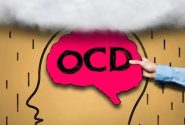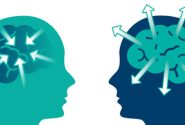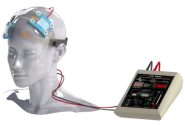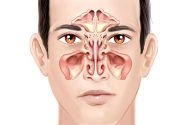به گزارش پایگاه خبری تحلیلی تسریر، به نقل از مدیسن نت، در یک مطالعه، بروز زوال عقل در میان سالمندان مبتلا به لرزش و رعشه تقریباً ۲۰٪ بود. با این حال، این میزان کمتر از بزرگسالان مبتلا به بیماری پارکینسون بود.
دکتر «الن لوئیس»، رئیس بخش عصب شناسی در دانشگاه تکزاس، میگوید: «رعشه و لرزش، نه تنها بر توانایی فرد برای انجام کارهای روزانه مانند نوشتن و خوردن تأثیر میگذارد، بلکه مطالعه ما نشان میدهد که افراد مبتلا به لرزش حاد نیز در معرض خطر ابتلاء به زوال عقل هستند.»
این یافته ها در نشست سالانه آکادمی نورولوژی آمریکا (AAN) 2024 در ۱۷ آوریل ۲۰۲۴ ارائه خواهد شد.
شیوع اختلال شناختی خفیف (MCI) تقریبا دو برابر است
برای این مطالعه، ۲۲۲ بزرگسال مبتلا به لرزش و رعشه با میانگین سنی ۷۹ سال در ابتدا تحت ارزیابی های شناختی دقیق قرار گرفتند و به طور متوسط به مدت ۵ سال تحت نظر قرار گرفتند.
در ابتدا، ۱۶۸ نفر دارای مهارت های شناختی نرمال، ۳۵ نفر دارای MCI و ۱۹ نفر دارای زوال عقل بودند. در طول پیگیری، ۵۹ نفر به MCI و ۴۱ نفر دچار زوال عقل شدند.
در طول پیگیری، شیوع تجمعی زوال عقل ۱۸.۵٪ و میانگین نرخ تبدیل سالانه MCI به دمانس ۱۲.۲٪ بود، تقریباً سه برابر بیشتر از میزان در جمعیت عمومی و تقریباً نصف میزان برای بزرگسالان مبتلا به زوال عقل گزارش شده است. شیوع تجمعی MCI (6/26%) تقریباً دو برابر جمعیت عمومی بود اما کمتر از آن در بیماران مبتلا به بیماری پارکینسون بود.
محققان در چکیده کنفرانس خود نوشتند: «داده های ما نشان می دهد که شیوع و نرخ تبدیل به زوال عقل در بین موارد مرتبط با سیر طبیعی پیری و میزان بارزتر مشاهده شده در افراد مبتلا به پارکینسون کاهش می یابد.»
دکتر شاهین لاخان، به Medscape Medical News گفت: «باید ارتباط بین لرزش حاد و زوال عقل را بیشتر روشن کنند و راهبردهای محافظت کننده عصبی را توسعه دهد.»
وی افزود: «با توجه به خطرات شناختی که بیماران زوال عقل با آن روبرو هستند، دیگر فایده ای ندارد زیرا عملکرد بالینی و ارتباط ما با بیماران باید مطابق با آنها سازگار شود.”
People with essential tremor (ET) have nearly three times increased risk of developing dementia compared with the general population, new research showed.
In a prospective, longitudinal study, incidence of dementia was nearly 20% among older adults with ET. However, the rates were lower than those in adults with Parkinson’s disease.
The study is “the most complete exposition of the longitudinal trajectory of cognitive impairment in an ET cohort,” said the authors, led by Elan D. Louis, MD, MSc, from University of Texas Southwestern Medical Center in Dallas, Texas.
The findings will be presented at the American Academy of Neurology (AAN) 2024 Annual Meeting on April 17, 2024.
Mild Cognitive Impairment (MCI) Prevalence Nearly Double
For the study, 222 adults with ET with an average age of 79 years at baseline underwent detailed cognitive assessments and were followed for an average of 5 years.
At baseline, 168 people had normal cognitive skills, 35 had MCI, and 19 had dementia. During the follow-up, 59 individuals developed MCI and 41 developed dementia.
During the follow-up, the cumulative prevalence of dementia was 18.5%, and the average annual conversion rate of MCI to dementia was 12.2% — nearly threefold higher than rates in the general population and roughly one half the magnitude of those reported for adults with Parkinson’s disease.
The cumulative prevalence of MCI (26.6%) was nearly double that of the general population but less than that in patients with Parkinson’s disease.
“Our data indicate that the prevalence of and conversion rates to dementia in ET fall between those associated with the natural course of aging and the more pronounced rates observed in individuals with PD,” the researchers wrote in their conference abstract.
“Moving forward, the research agenda must further elucidate the link between ET and dementia and develop neuroprotective strategies. But this study represents a seismic shift in how we understand essential tremor,” Lakhan told Medscape Medical News.
“The benign label no longer applies given the cognitive risks ET patients face. Our clinical practice and communication with patients must adapt accordingly,” he added.
تسریر مراقب سلامتی شماست!












































































